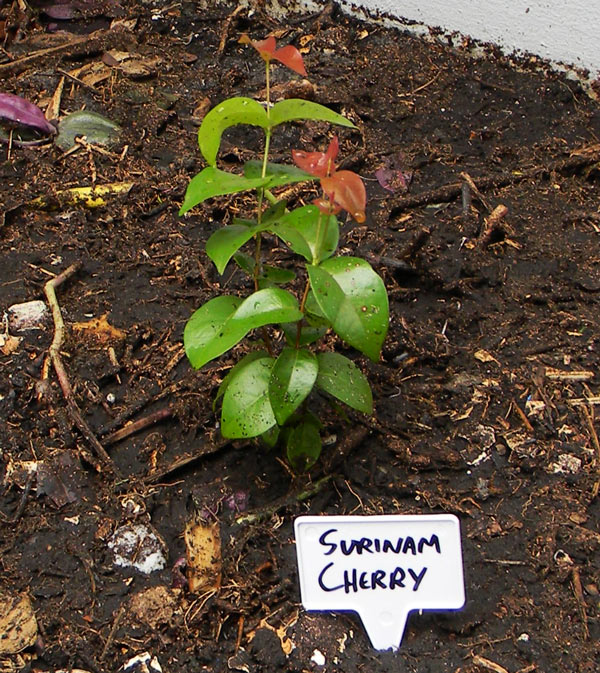The Surinam cherry used to be a common hedge plant in Florida, often just called “cherry hedge.”
When I was a kid, our neighbors had a cherry hedge across the front of their porch and we would occasionally eat the weird, resinous fruits. They had a strange taste, almost like you licked a battery while eating an artificially flavored sweet tart. If they weren’t fully ripe, they were awful. When they were fully ripe, they were edible but still had an undertone of spar varnish.
“I will freely admit these little red pumpkins are an acquired taste. Most folks are expecting some kind of cherry taste and they don’t have that. No matter how ripe, there is a resinous quality. To be blunt, you either like them or you definitely do not. More so, they must be picked when absolutely ripe or they are a very unpleasant edible experience. What is absolutely ripe? There is orange red, the color of cars, and here is blue red, the color of old-time fire trucks and blood. Surinam cherries are edible when they are a deep blood-red. Let me repeat that: A deep blood-red. An orange red one won’t harm you but you’ll wish you hadn’t eaten it. And I know you will push the envelope and try one that is not deep, blue-blood red. Don’t blame me. I warned you. You won’t die or throw up or the like but your mouth will disown you and the next time you will pick a very ripe one.”
So why do I say Surinam cherries are an “excellent fruit?”
Because an improved Surinam cherry variety has as much in common with its plebeian hedge-dwelling relative as a ripe, sun-warmed Honeycrisp apple has with a wormy crab apple.
Good Surinam Cherries
I used to think the best varieties of Surinam cherries were the black ones. You can see a shot of some growing in this video, starting at 0:39:
The black varieties are much better than their common red counterparts, as Julia Morton wrote:
“There are 2 distinct types: the common bright-red and the rarer dark-crimson to nearly black, which tends to be sweeter and less resinous.”
The key word is “tends,” as I have now discovered a very good red variety and am propagating it from seed. This particular red Surinam cherry has a large fruit with a lot of flesh and a small pit. The resin flavor is a background spice to the fruit, rather than a dominant flavor, and they taste good even when not fully ripe. I’m going to attempt to air-layer the variety (I share details and illustrations on air-layering in my book Free Plants for Everyone) in order to exactly duplicate it, as I’m not sure it will grow true to type from seed. I do know that seeds from black varieties will grow into black varieties, but I don’t know how well fruit quality is transmitted from generation to generation.
Sometimes we give up on fruits too easily. Imagine if the men of antiquity had decided not to bother propagating citrus after tasting wild sour oranges! Seeking out good varieties and propagating them is a great thing. Because the common forms of Surinam cherry are, at best, an “acquired taste,” it doesn’t mean all of them are. The black varieties I tried at the Broward County Rare Fruit and Vegetable Council were delicious right from the tree, as was the red variety I tasted here. I saved seeds from both and have them growing on my porch, soon to be planted into my new tropical food forest.
I’m planting the seeds. If you find a great fruit, do the same!


3 comments
[…] post Surinam Cherry: An Excellent Fruit appeared first on The Survival […]
What about cooking these? I make surinam cherry jam — great with chicken/turkey etc. Tart like cranberries but more flavourful.
Some of my grandkids like them fresh, all of them love the jam.
I think it’s a great idea. I’ve heard they make great jam but haven’t tried it. Do you have pictures? Would love to hear how you make it, too.
Comments are closed.